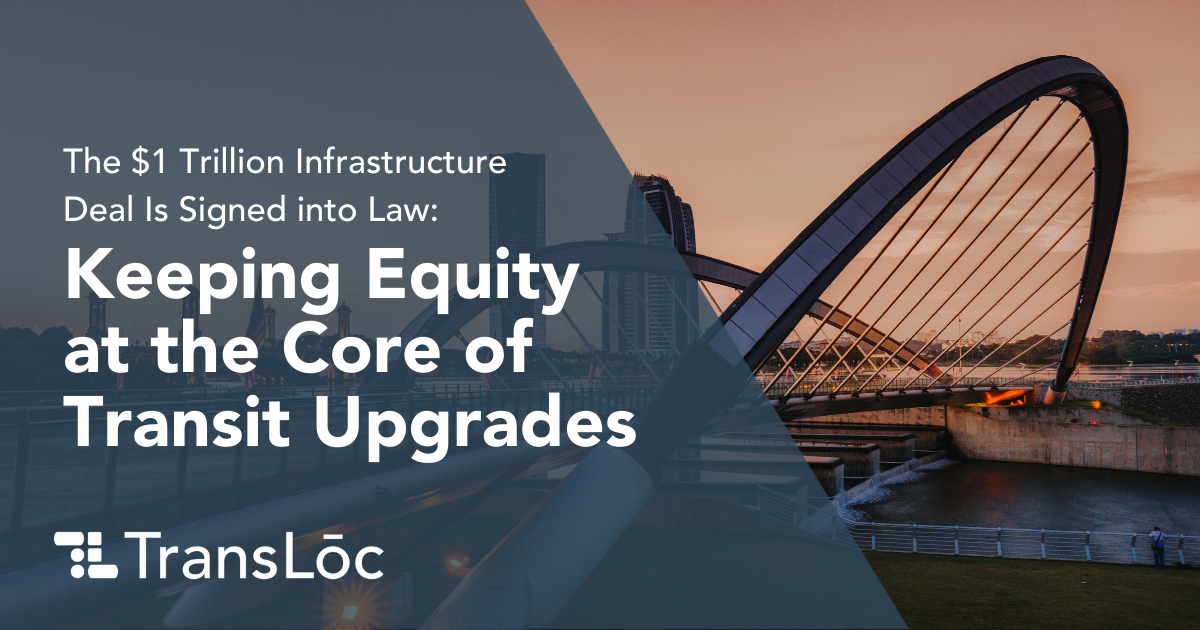
U.S. infrastructure today maintains a C- grade according to the American Society of Civil Engineers’ Report Card. Over the next five years, this is sure to change with President Biden signing the $1 trillion+ Bipartisan Infrastructure Deal into law, which will direct $550 billion into upgrading our transportation systems, broadband, and utilities. When the Senate passed this bill in August, I wrote a blog post analyzing the details of the package as they relate to public transportation, including funding for transit rehabilitation and expansion projects, mobility accessibility programs, and low-emission and electric vehicle deployment.
These exciting investments are imperative to getting Americans back on their feet post-pandemic. Most importantly, this investment is essential to creating more equitable communities where opportunity is available for all.
Here’s why:
Equity Breeds Innovation
While recent conversations in the transportation industry and the media primarily focus on technological innovation (such as the prospect of autonomous vehicles), community leaders, transit providers, and mobility tech companies have much work to do before they consider rolling out new technologies. This new funding will help our communities and transit providers build flexible mobility ecosystems that will more efficiently connect communities, provide more accessible means of transportation, and lay the foundation for future transit innovation.
Creating more equitable transit options and expanding access is at the heart of the Bipartisan Infrastructure Deal. This package will make it easier for more Americans to use public transit services that are affordable, safe and reliable by:
- Expanding transit routes and upgrading vehicles. In their current state, transit systems effectively connect residents and commuters moving about central hubs in downtown areas; but it is time we expand services to underserved regions of a city or more suburban and rural communities. The end result will be connecting people to meaningful work and reviving local economies by driving more business to local restaurants and shops that faced unprecedented loss over the past 18 months.
- Broadening sustainable transportation services. As the world tackles various environmental issues, we must ensure that sustainable services are not a luxury, but a basic right for every American. This is especially important for transit as EPA data shows the transportation industry is responsible for the most greenhouse gas emissions of any sector (about 29%). To solve this, the infrastructure package will allocate funding toward electrification — building a nationwide network of universal EV charging stations that lay the foundation for sustainable transportation options everywhere.
- Launching paratransit services. As I mentioned in my previous post, more than 223 million paratransit trips are recorded each year, serving tens of millions of riders in the United States alone. These riders depend on low-cost, readily available options to get to important doctor’s appointments, conduct daily activities like grocery shopping, and even see their families and loved ones. Unfortunately, public transit services are not always optimized to support these riders. With this new funding, we expect to see a dedicated focus to enhancing public transit to better serve this unique pool of riders and allow them to move freely about their communities.
So, What’s Next?
This new legislation is not a silver bullet to creating more equitable transportation. Bringing these advancements to life will require meticulous planning and data-driven re-designs that optimize individual transit systems to best meet the needs of their community members.
As transit providers begin to receive funds in the coming months, they must determine opportunities to collaborate with industry leaders, such as our Planning & Design Services team, to make the transit experience more accessible and reliable for more people. We’ll help you find ways to better integrate mobility offerings and make transit a smarter option for every resident.
Together, we can usher public transit into a much brighter, more equitable future. We are excited to help operators across the country find these answers and deploy smart solutions that help our country arrive at this destination.